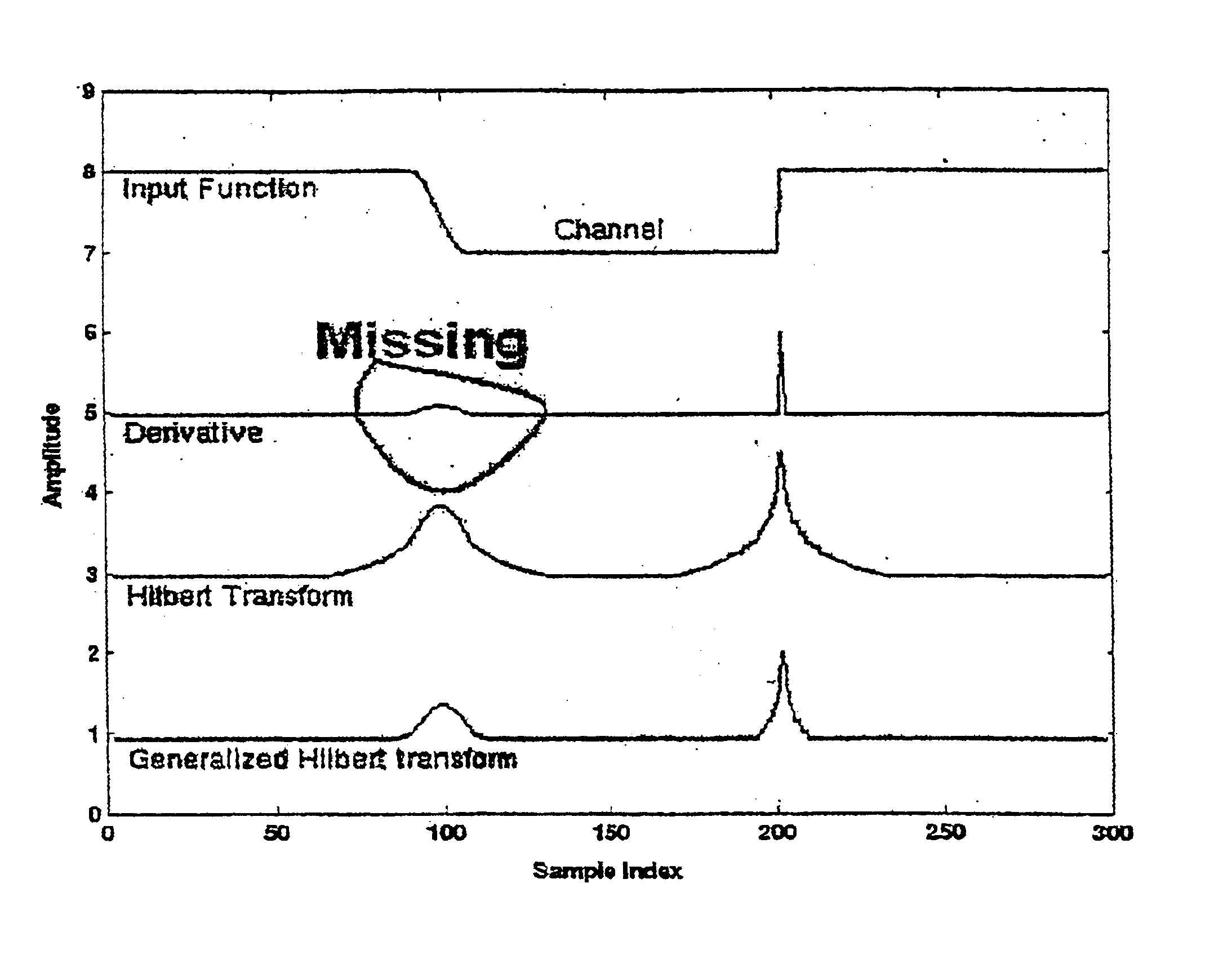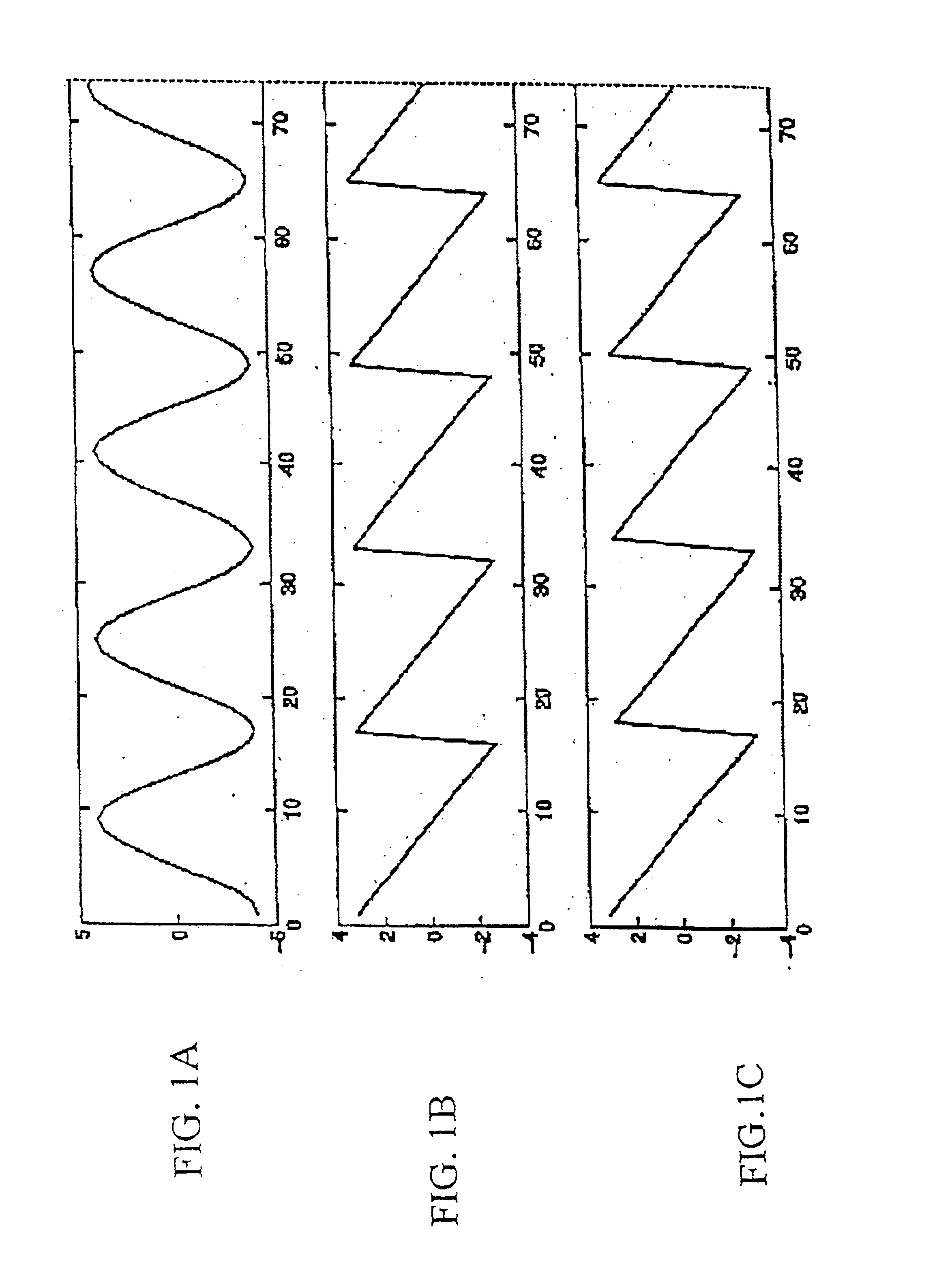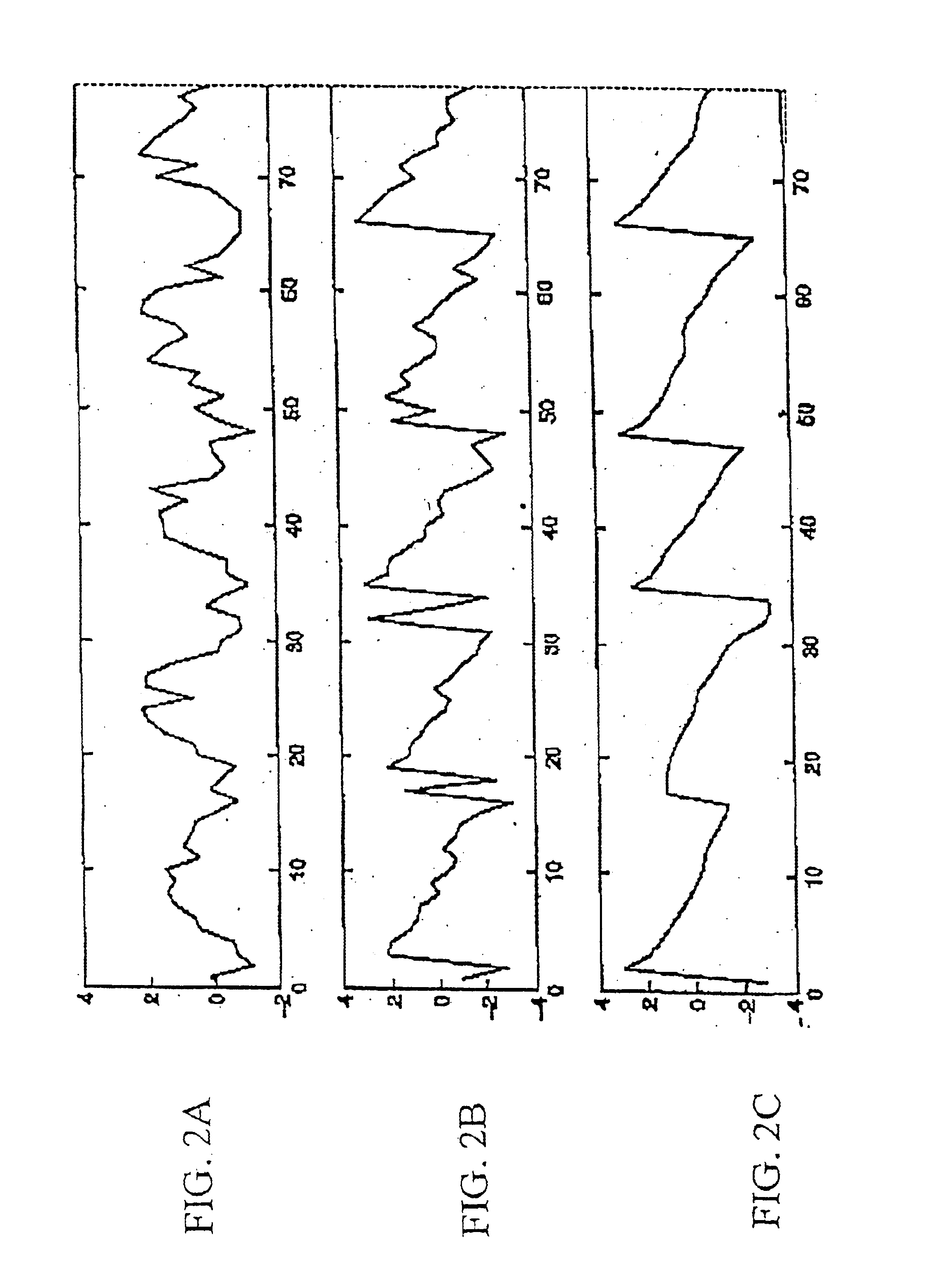Seismic data processing method to enhance fault and channel display
- Summary
- Abstract
- Description
- Claims
- Application Information
AI Technical Summary
Benefits of technology
Problems solved by technology
Method used
Image
Examples
Embodiment Construction
[0039]As indicated above, the present invention involves the use of a Generalized Hilbert Transform, of which the traditional Hilbert transform is a special case. Before describing the preferred embodiments of the present invention, therefore, a description of the traditional Hilbert transform will be given.
[0040]The traditional Hilbert transform (HT) in the frequency domain can be expressed as:
hi(ω)=X(ω)·Sign(ω)·i (1)
[0041]Here, X(ω) is the Fourier transform of an input trace, Sign(ω) is the sign function and hi(ω) is the Hilbert transform of x(t) in the frequency domain.
[0042]Applying, the inverse Fourier transform to hi(ω) in equation (1) yields:
hi(t)=Σω{X(ω)·Sign(ω)·i·exp(iωt)} (2)
[0043]For t=0, Equation (2) yields:
hr(0)=2*ΣωReal[X(ω)]+Real[X(0)] (3)
hi(0)=2*Σω[Image X(ω)] (4)
h(0)=hr(0)+i*hi(0) (5)
[0044]where Σω means summation over positive frequencies, and hr and hi are the real and imaginary parts of the complex trace h.
[0045]Equations 3-5 states that hi(t) can be express...
PUM
 Login to View More
Login to View More Abstract
Description
Claims
Application Information
 Login to View More
Login to View More - R&D
- Intellectual Property
- Life Sciences
- Materials
- Tech Scout
- Unparalleled Data Quality
- Higher Quality Content
- 60% Fewer Hallucinations
Browse by: Latest US Patents, China's latest patents, Technical Efficacy Thesaurus, Application Domain, Technology Topic, Popular Technical Reports.
© 2025 PatSnap. All rights reserved.Legal|Privacy policy|Modern Slavery Act Transparency Statement|Sitemap|About US| Contact US: help@patsnap.com



